Agave Plant
- October 24, 2023
- 0 comment
The Agave Plant, a remarkable succulent native to the arid regions of the Americas, stands as a symbol of resilience and versatility. Characterized by its striking rosette of thick, fleshy leaves with sharp spines at the tips, the agave has been an integral part of indigenous cultures for centuries.
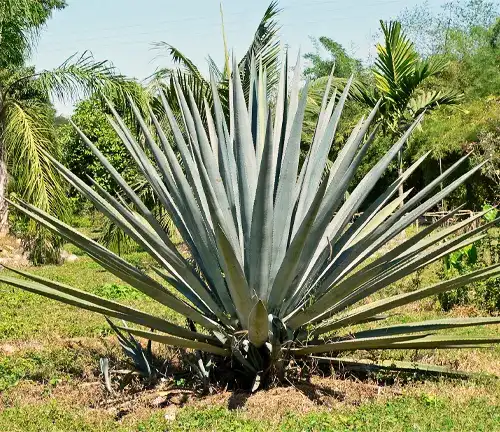
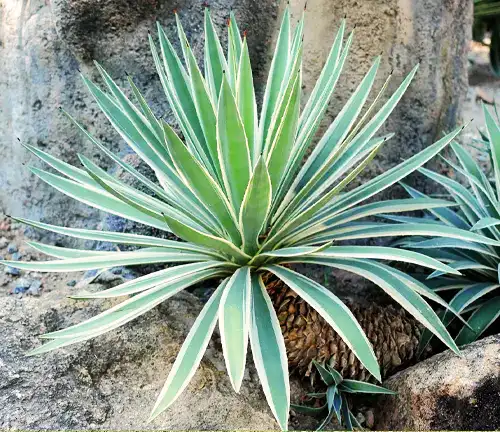
Notably, it is best known for its role in the production of agave nectar, tequila, and mezcal, making it an essential agricultural crop. Agaves are incredibly adaptive, thriving in harsh, sun-drenched environments with minimal water, thanks to their ability to store moisture in their thick leaves.
Besides its economic importance, the agave also offers ecological benefits, providing a habitat for wildlife and aiding in soil erosion prevention. Its unique blend of utility and natural beauty makes the agave plant a cherished presence in both desert landscapes and our global culture.
| Characteristics | Description |
| Scientific Name | Agave |
| Common Names | Agave, Century Plant |
| Family | Asparagaceae |
| Native Region | Americas, primarily arid and semi-arid regions |
| Plant Type | Succulent, perennial |
| Size | Varies by species; can range from a few inches to several feet in height and width |
| Leaves | Thick, fleshy, usually in a rosette form; often with sharp spines at the tips |
| Flowers | Typically tall spikes with tubular, often colorful, flowers; flowering occurs once in the plant’s lifetime (hence the name “Century Plant”) |
| Propagation | Mainly through offsets (pups) produced at the base of the mature plant |
| Drought Tolerance | Extremely drought-resistant due to its water-storing capacity |
| Cultural Uses | Production of agave nectar, tequila, and mezcal; fiber for textiles; ornamental landscaping |
| Ecological Role | Provides habitat and food for various wildlife; helps prevent soil erosion in arid regions |
| Notable Species | Agave americana, Agave tequilana, Agave parryi, Agave sisalana |
| Hardiness Zones | Varies by species; generally suited for USDA hardiness zones 8-11 |
| Growth Rate | Slow-growing, with a single flower stalk often taking years to develop |
| Lifespan | Typically monocarpic, meaning they flower once and then die, but can live for several decades before flowering |
Botanical Beauty of “Agave Plant”
In the arid landscapes of the Americas, one can’t help but be captivated by the striking beauty of the agave plant. This succulent marvel, belonging to the Asparagaceae family, possesses a unique and remarkable charm. The agave’s rosette of thick, fleshy leaves, adorned with spiny tips, gives it an architectural elegance that graces deserts and gardens alike. Its sculptural form and a variety of species offer a mesmerizing botanical diversity that showcases the wonders of nature.
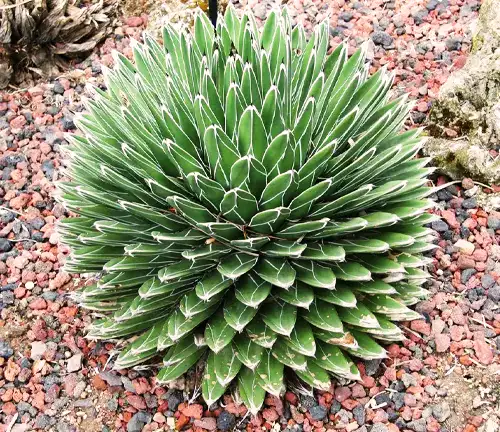
Woodland Elegance
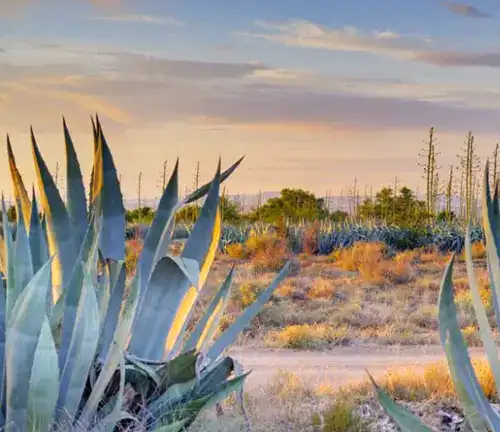
The agave’s elegance extends beyond the arid deserts; it also thrives in woodland environments, adding a touch of natural sophistication to these landscapes. Some agave species, like the Agave parryi, adapt to higher altitudes and cooler climates, revealing their versatility in nature’s tapestry. These woodland agaves may lack the imposing size of their desert counterparts but make up for it with their intricate, finely textured leaves and a subtle charm that contributes to the lushness of the forest.
Ecological Importance
Beyond their aesthetic appeal, agave plants play a crucial role in their ecosystems. These hardy succulents offer shelter and sustenance to various creatures, from insects to birds. Nectar-feeding bats are especially reliant on agave flowers for their survival, making agaves indispensable in maintaining biodiversity. Furthermore, their deep root systems help prevent soil erosion, making them an ecological linchpin in arid regions.
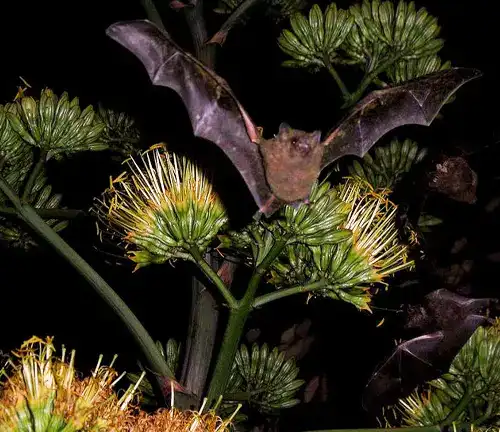
Cultivation and Conservation
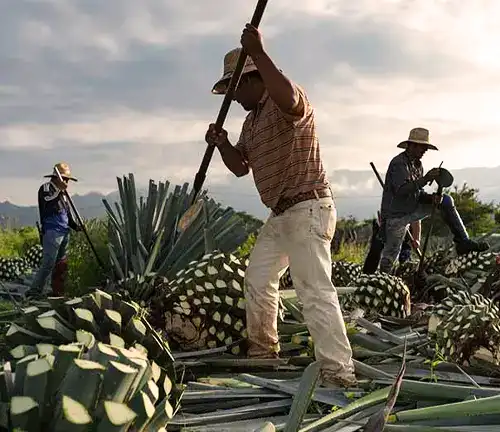
As we marvel at agave’s botanical beauty, we also realize the importance of its cultivation and conservation. In recent years, some agave species have faced challenges due to overharvesting for commercial purposes like tequila production. Conservation efforts are underway to protect these remarkable plants. Their relatively slow growth and limited propagation through offsets highlight the need for sustainable cultivation practices to ensure agave’s survival.
Fragrance
The agave plant isn’t just about visual aesthetics; it appeals to another of our senses as well – smell. When agave plants bloom, they emit a delightful, sweet fragrance that beckons pollinators. This aromatic invitation serves as a reminder that beauty in nature often engages multiple senses, making the agave a multisensory wonder.
Soil Stabilization
One of the unsung heroes of the agave plant is its role in soil stabilization. In arid and semi-arid regions, their deep root systems anchor the soil, preventing erosion caused by wind and water. Their ability to adapt to harsh conditions and create a stable environment underscores their ecological importance, particularly in combating desertification.
Common Uses

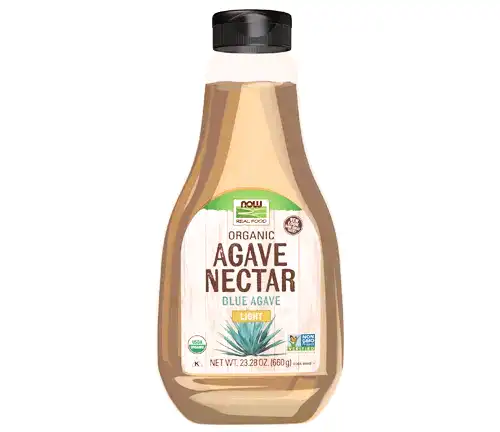
The agave plant is not just a botanical wonder; it’s a versatile resource for humans. It’s famous for being the primary ingredient in tequila and mezcal production. Agave nectar, a natural sweetener, has found its way into our kitchens as a healthier alternative to sugar. Agave fibers have been used for centuries in textiles, and agaves make for striking ornamental additions to gardens and landscapes worldwide.
Benefits
The agave plant offers a plethora of benefits. Whether it’s through the economic value derived from tequila production, the ecological services it provides, or its aesthetic contributions to gardens, agaves enrich our lives. As we appreciate their botanical beauty, we must also recognize the need for responsible conservation and sustainable practices to ensure that this magnificent succulent endures for generations to come.
Different Species
Agave americana
(Century Plant)
Known for its large size and striking rosette of blue-gray leaves with sharp spines. It’s one of the most recognizable agave species and can take several years to mature and bloom.
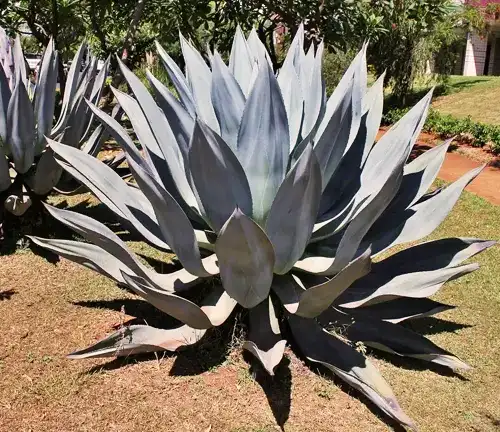

Agave tequilana
(Blue Agave)
The primary species used in the production of tequila. It features blue-green leaves and is known for its high sugar content, crucial for tequila fermentation.
Agave parryi
(Parry’s Agave)
Found in the southwestern United States and northern Mexico, this agave is smaller in size with compact, succulent leaves. It’s well adapted to arid environments.

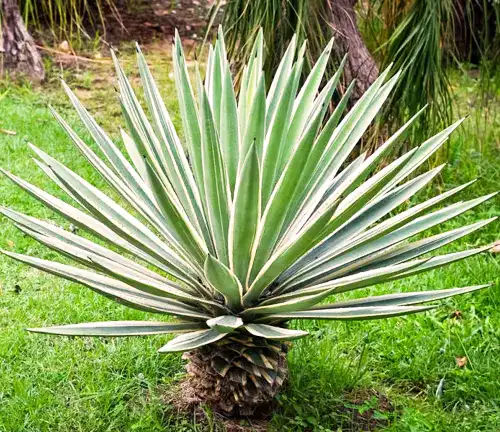
Agave sisalana
(Sisal Agave)
Native to southern Mexico, this species is famous for its long, spiky leaves, which are used to produce sisal fibers for ropes and textiles.
Agave victoriae-reginae
(Queen Victoria Agave)
Named for its elegant, compact rosette of dark green leaves with white markings. It’s a popular ornamental plant in gardens.
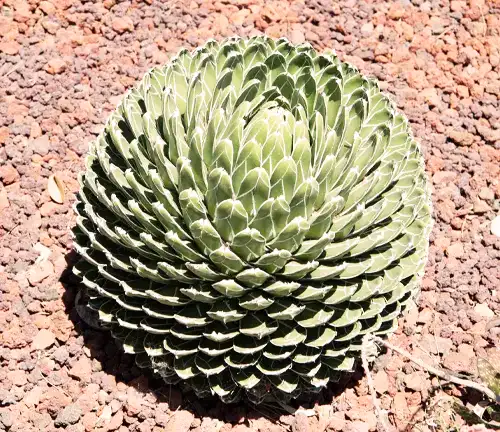
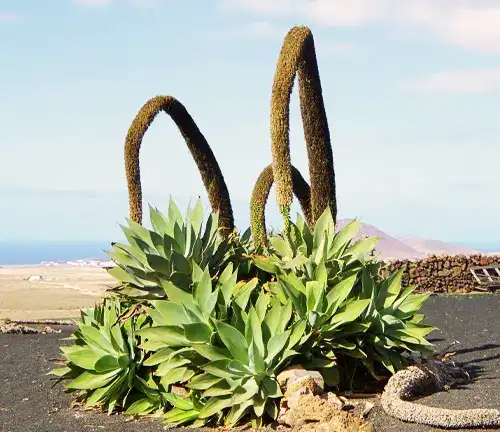
Agave attenuata
(Fox Tail Agave)
Recognizable for its lack of spines and soft, curved leaves. It’s commonly used in landscaping for its aesthetic appeal.
Agave desmettiana
(Smooth Agave)
Features smooth, spineless leaves and is often chosen for decorative landscaping.

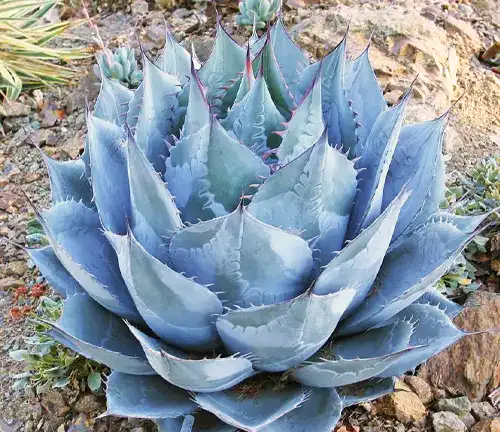
Agave parrasana
(Cabbage Head Agave)
Native to Mexico, it forms a compact, cabbage-like rosette of blue-gray leaves.
Agave vilmoriniana
(Octopus Agave)
Named for its unique, curving leaves that resemble octopus tentacles. It’s popular in ornamental gardening.
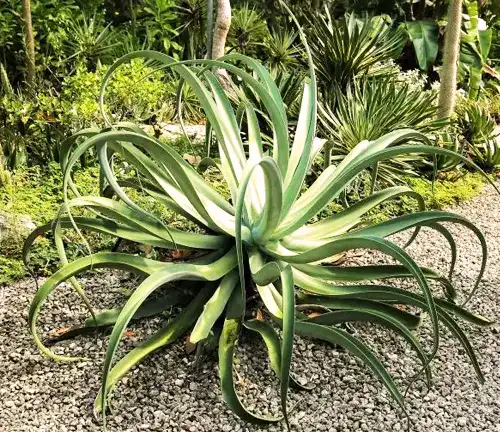
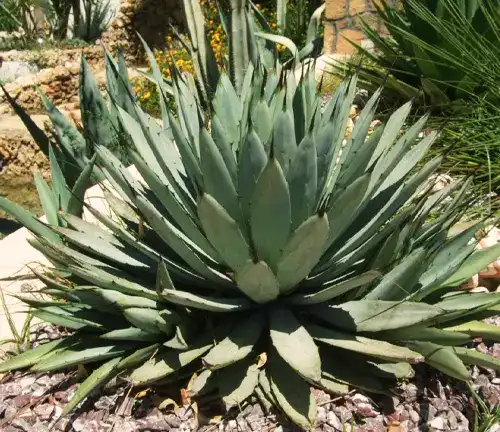
Agave macroacantha
(Black Spined Agave)
Recognizable by its dark, black spines on the edges of its leaves and its compact rosette form.
Agave chrysantha
(Goldenflower Century Plant)
Native to the southwestern United States, it is known for its bright yellow flowers and compact rosette.
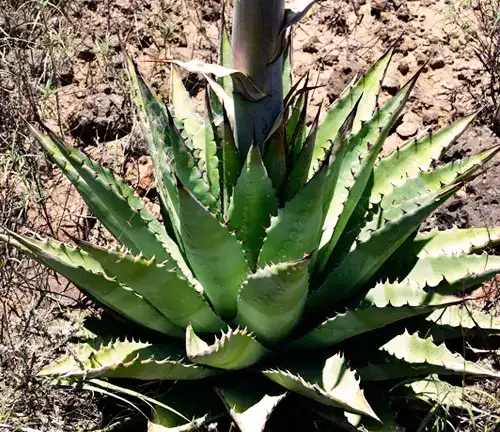
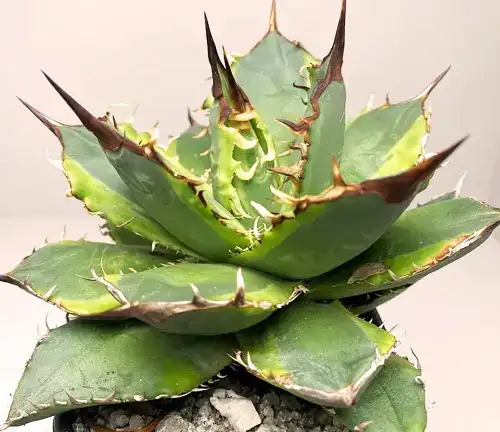
Agave titanota
(Agave Titan)
Features dense rosettes of pale blue-green leaves with distinctive teeth along the margins.
Frequently Asked Questions (FAQs)
- What is an agave plant?
Agave plants are succulent perennials native to the Americas, known for their fleshy leaves and often sharp spines at the tips. They come in various species, each with unique characteristics. - How do I care for my agave plant?
Agaves are relatively low-maintenance. They thrive in well-draining soil and require minimal water. Place them in full sun to partial shade, and protect them from extreme cold temperatures. - Can agave plants be grown indoors?
While some smaller agave species can be grown indoors, they generally prefer outdoor conditions with plenty of sunlight. Indoor growth may require careful attention to lighting and temperature. - How often should I water my agave plant?
Agaves are drought-tolerant and do not require frequent watering. Water sparingly, allowing the soil to dry out between waterings to prevent root rot. - When do agave plants bloom?
Agaves typically bloom once in their lifetime, which can take many years. The exact timing of blooming varies by species but often occurs in the plant’s mature stage. - Are agave plants invasive?
Some agave species can become invasive in non-native environments. It’s essential to research and choose agaves that are well-suited to your region to prevent ecological disruptions. - Can I propagate agave plants?
Agaves can be propagated through offsets, also known as “pups,” which grow at the base of mature plants. These can be separated and replanted. - Are agave plants edible?
While the leaves of some agave species can be eaten when properly prepared, they are primarily known for their use in producing agave nectar and alcoholic beverages like tequila and mezcal. - How can I protect my agave plant from pests and diseases?
Agaves are generally resistant to most pests and diseases. However, occasional inspections for aphids, scale insects, and fungal infections are advisable. - Are there conservation concerns related to agave plants?
Yes, some agave species are at risk due to overharvesting for commercial purposes. Conservation efforts are underway to protect these valuable succulents. - What are the common uses of agave plants?
Agave plants have a wide range of uses, including tequila and mezcal production, agave nectar as a sweetener, sisal fiber for textiles, and ornamental landscaping. - Can agave plants be grown in containers?
Yes, many agave species can be grown in containers, making them suitable for patios and small gardens. Ensure proper drainage to prevent waterlogging.



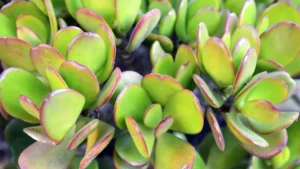

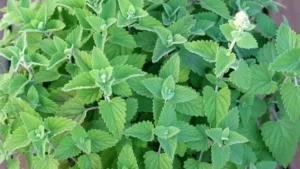






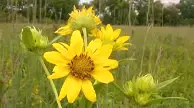

Leave your comment